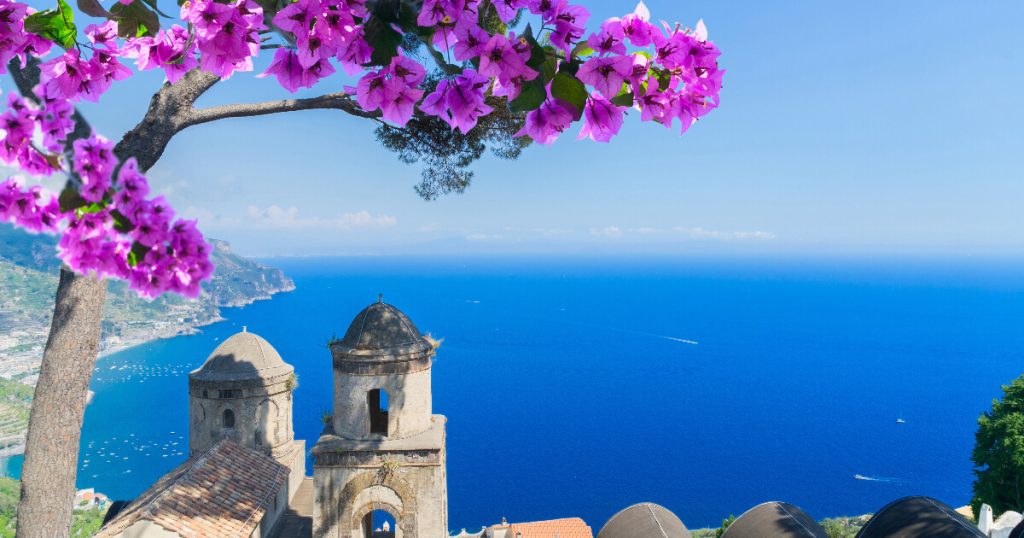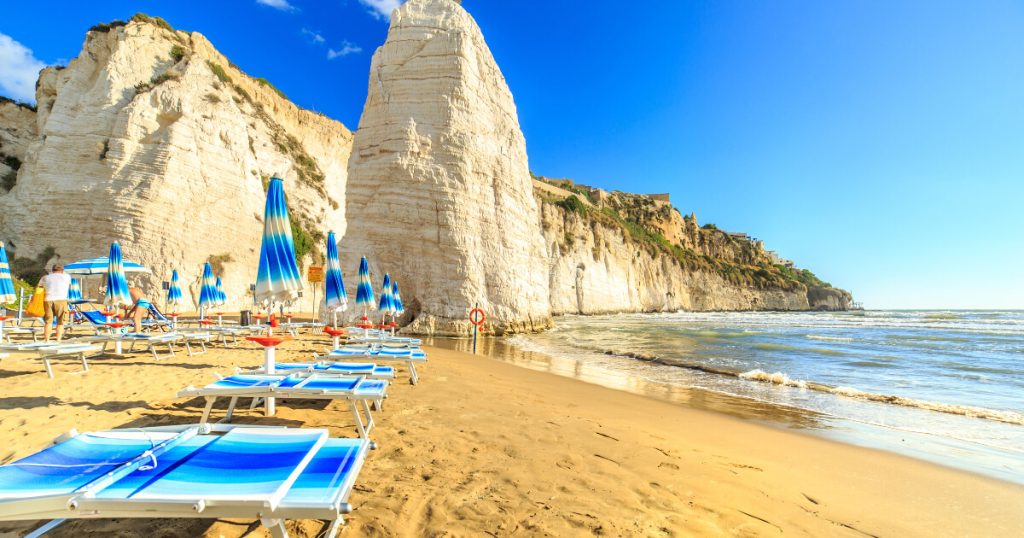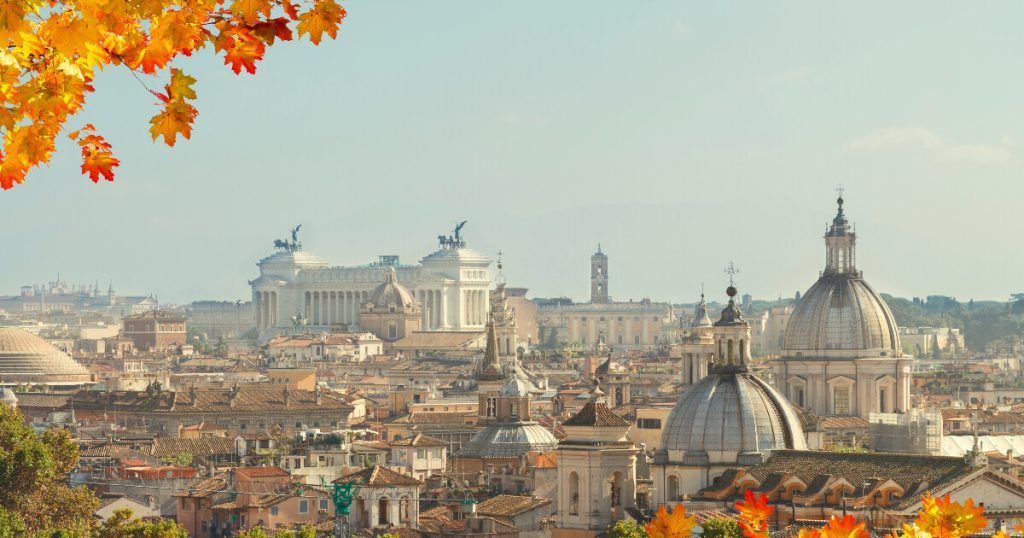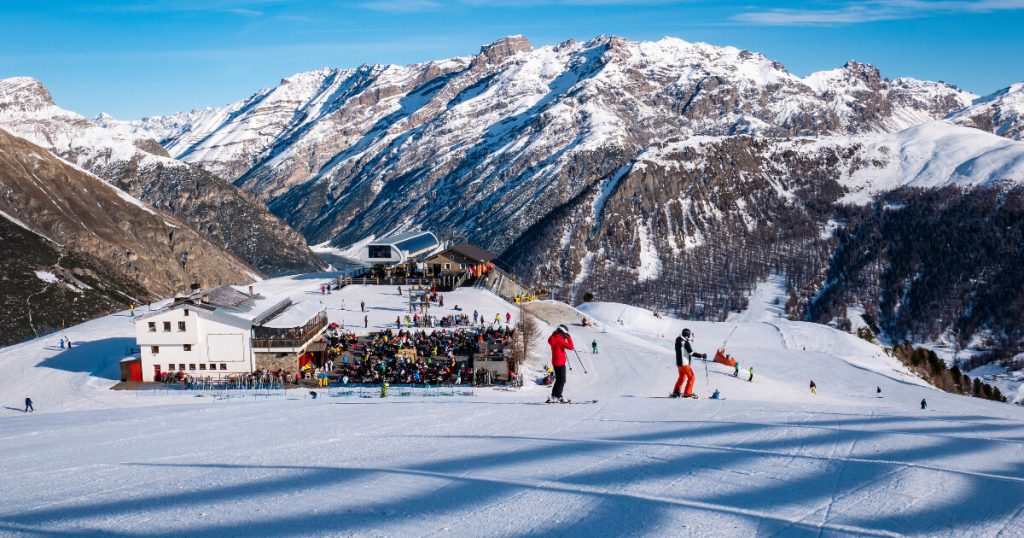Give in to your desire and let the appeal of Italy’s many landscapes direct your calendar-based travels. The best time to visit Italy – an enchanting nation becomes a thrilling decision as the seasons paint Italy with their own particular colors. Will you enjoy the soothing spring breezes that awaken both festivities and flowers? Or does the thought of perfect summer days, where gelato and views of the sea rule supreme, call to you? Maybe the warm colors of autumn and the vineyards’ wine-colored hues are your invitations to enjoy Italy’s rich traditions. So, let me be your compass in the symphony of seasons that graces this enchanting land.
The Best Time to Visit Italy – Ultimate Guide
Table of Contents
Firstly, I want to tell you that the best time to visit Italy absolutely depends on your preferences, interests, and the regions you plan to explore. Because Italy experiences a diverse climate due to its long north-south extension. So, here’s a breakdown of the seasons to help you decide when to visit.
Spring (March to May)

Photo via: Adobe Stocks
Spring is generally considered one of the best times to visit Italy. Because, the weather is pleasant, and the landscapes are vibrant with blooming flowers. The tourist crowds are not as overwhelming as during the summer months, making it an ideal time to explore popular cities and attractions. So, Here I compelled 8 reasons why visiting Italy in the spring (March to May) is considered one of the best times.
1. Pleasant Weather
With its gentle temperatures, spring in Italy is perfect for outdoor adventures and city exploration. Unlike summer’s heat or winter’s cold, you can enjoy historical sites and landscapes comfortably.
2. Blooming Landscapes
During spring, Italy’s countryside bursts into vibrant colors with blooming flowers, lush vineyards, and rolling hills. Additionally, This creates picturesque scenes that are perfect for photographers and nature enthusiasts.
3. Fewer Crowds
During spring, slightly after the peak tourist season, major attractions have fewer crowds. This provides a tranquil exploration atmosphere, distinct from the bustling summer months.
4. Cherry Blossom Festivals
In certain regions, such as the Veneto and Lombardy, you can witness beautiful cherry blossom festivals. The sight of these delicate blooms against historic backdrops is a truly enchanting experience.
5. Cultural Events
Spring marks the beginning of various cultural events, music festivals, and outdoor performances. From classical concerts to local celebrations, you can immerse yourself in the rich cultural tapestry of Italy.
6. Ideal for Food and Wine Enthusiasts
Spring is when many local ingredients are at their prime, offering a great culinary experience. Fresh produce, like artichokes and asparagus, are featured in local dishes. Furthermore, it’s a wonderful time for wine tours and tastings as vineyards come alive.
7. Ample Accommodation Availability
While still a popular time to visit, spring has more available accommodation options compared to the summer months. This gives you flexibility in choosing accommodations that suit your budget and preferences.
8. Mild Mediterranean Coast
Spring is perfect for exploring Italy’s stunning Mediterranean coastline. While the water might still be a bit cool for swimming, you can enjoy seaside walks, coastal towns, and beautiful sunsets without the intense heat and tourist crowds of summer.
Overall, visiting Italy in spring offers a well-rounded experience with comfortable weather, blooming landscapes, cultural festivities, and the advantage of avoiding the peak tourist season. It’s a time when you can truly savor the beauty and charm of Italy at a more leisurely pace.
Summer (June to August)

Photo via: Adobe Stocks
Summer is the peak tourist season in Italy, especially in cities like Rome, Florence, and Venice, as well as coastal regions like the Amalfi Coast and Sicily. Because, the weather is warm to hot, and you can enjoy festivals, outdoor events, and beach activities. However, be prepared for larger crowds and higher prices. Here are 8 compelling reasons to consider visiting Italy in the summer (June to August).
1. Warm and Sunny Weather
Italy’s summer offers reliably warm and sunny weather, making it a great time for beach vacations, outdoor activities, and enjoying al fresco dining in charming piazzas.
2. Vibrant Festivals
Summer is festival season in Italy, with numerous local and regional events celebrating art, music, food, and culture. From historical reenactments to lively street parades, you will have the chance to immerse yourself in Italian traditions.
3. Extended Daylight Hours
The longer daylight hours in summer mean more time to explore and enjoy the sights. You can maximize your experiences by having extra time to visit attractions and take leisurely strolls.
4. Coastal Retreats
Italy’s stunning coastline comes alive in the summer. You can relax on beautiful beaches, swim in the Mediterranean Sea, and indulge in water sports like snorkeling, sailing, and kayaking.
5. Culinary Delights
Summer brings an abundance of fresh produce to Italy’s markets and restaurants. From juicy tomatoes to fragrant basil, you’ll experience the true flavors of Italian cuisine at its peak.
6. Alpine Adventures
If you are seeking cooler temperatures, head to the Italian Alps. The summer months are perfect for hiking, mountain biking, and exploring charming alpine villages.
7. Open-Air Performances
Many cities offer open-air concerts, operas, and theater performances during the summer months. Watching a classic opera in an ancient Roman amphitheater, like the Arena di Verona, is a magical experience.
8. Cruise and Island Exploration
Summer is the ideal time to embark on a Mediterranean cruise or explore Italy’s stunning islands like Sicily, Sardinia, and Capri. The crystal-clear waters and picturesque landscapes are a highlight.
Italy is undoubtedly alluring during the month of summer. But, keep in mind that it is also the peak tourist season. Popular tourist destinations can become crowded, and accommodations might be in high demand. Planning ahead and being prepared for warm temperatures and bustling crowds will help you make the most of your summer adventure in Italy.
Fall (September to October)

Photo via: Adobe Stocks
Another excellent time to visit Italy is in the fall season. This season offers mild weather, fewer crowds compared to summer, and the added bonus of harvest festivals and wine tasting. The landscapes turn golden, creating a picturesque setting, particularly in Tuscany and Umbria. Here are 8 compelling reasons why the fall (September to October) is a wonderful time to visit Italy.
1. Mild Weather
Fall offers pleasant and mild weather, with cooler temperatures compared to the summer heat. This makes it comfortable for exploring cities, historical sites, and outdoor attractions.
2. Spectacular Foliage
During spring, Italy’s landscapes transform into a stunning tapestry of autumn colors. The rolling hills, vineyards, and countryside are ablaze with golden and red hues, creating a picturesque backdrop for your travels.
3. Harvest Festivals
During fall, the harvest season unfolds. Italy’s agricultural heritage shines through festivals honoring wine, olive oil, truffles, and local delicacies. Engage in these events for an authentic Italian cultural immersion.
4. Wine Tours and Tastings
Vineyards are bustling with activity during the grape harvest season. You can indulge in wine tours and tastings, getting an up-close look at the winemaking process and enjoying the freshest vintages.
5. Fewer Tourist Crowds
As the summer rush subsides, you will find fewer crowds at popular tourist destinations and attractions. Therefore, It allows for a more relaxed and intimate experience as you explore Italy’s treasures.
6. Cultural Events
Fall marks the start of cultural events, including art exhibitions, music concerts, and theater performances. This is also a fantastic opportunity to engage with Italy’s artistic heritage in a more serene setting.
7. Mild Mediterranean Waters
If you are a fan of coastal exploration, fall offers warmer waters than the previous spring. While swimming might still be enjoyable, you can also bask in the beauty of Italy’s coastline without the summer crowds.
8. Favorable Photography Conditions
The soft lighting and rich colors of autumn create an ideal environment for photography enthusiasts. Moreover, Capture iconic landmarks and breathtaking landscapes in their fall glory.
Overall, Fall in Italy provides a well-balanced experience with comfortable weather, fewer tourists, and a range of cultural and culinary events. It is a time when you can immerse yourself in the authentic charm of Italy while enjoying the unique beauty that the season brings.
Winter (November to February)

Photo via: Adobe Stocks
Winter is a great time to visit if you are interested in experiencing Italy’s rich cultural and historical attractions without the crowds. However, some regions, especially in the north, can get quite cold. Ski enthusiasts will enjoy the Italian Alps during this time. Coastal areas and southern regions tend to be milder and more temperate. So, Here are 8 compelling reasons to consider visiting Italy in the winter (November to February).
1. Mild Southern Climate
Italy’s southern regions, including Sicily and the Amalfi Coast, experience milder winters compared to the north. This makes it a pleasant destination for those seeking a winter getaway without extreme cold.
2. Festive Atmosphere
Italy is known for its festive holiday celebrations, especially during December. You can enjoy Christmas markets, festive decorations, and lively street events that add a touch of magic to your visit.
3. Cultural Experiences
Winter offers the chance to explore Italy’s rich cultural heritage without the large crowds of other seasons. You can enjoy museums, art galleries, and historical sites in a more peaceful setting.
4. Winter Sports
Northern Italy’s mountainous regions, such as the Italian Alps, are perfect for winter sports enthusiasts. Skiing, snowboarding, and other snow-related activities can be enjoyed in stunning alpine settings.
5. Lower Prices
Winter is considered the off-peak tourist season, so you will find more affordable accommodations, flights, and attractions. This can also make it a budget-friendly time to explore Italy.
6. Gastronomic Delights
Winter is the season for hearty Italian cuisine. Warm up with comforting dishes like risotto, pasta, and rich soups. Truffle hunting is also a popular winter activity in some regions.
7. Carnival Celebrations
February brings vibrant Carnival celebrations, especially in Venice. Witness the elaborate masks, costumes, and parades that pay homage to centuries-old traditions.
8. Romantic Ambiance
Winter’s cozy atmosphere and smaller crowds create a romantic setting for couples. Imagine strolling through historic streets, enjoying candlelit dinners, and sipping wine by the fireplace.
While Italy’s winter has much to offer, it is important to note that some tourist sites and attractions may have limited operating hours or closures. Additionally, weather conditions can vary, so be prepared for colder temperatures in northern regions. Overall, Italy in winter offers a unique and charming experience that caters to various interests and preferences.
Conclusion
Keep in mind that Italy’s climate varies from north to south. Northern regions like Milan and Venice have a continental climate with colder winters, while southern regions like Sicily and the Amalfi Coast have a Mediterranean climate with milder winters and warmer summers.
Ultimately, the best time to visit Italy depends on your interests and preferences. If you are looking for pleasant weather and fewer crowds, consider traveling during the shoulder seasons of spring and fall. If you’re drawn to vibrant festivals, warm beach weather, and lively street life, then summer might be your preferred time to explore.
Hey there! I’m Kartik. I am a finance professional and a travel and lifestyle blogger. I am vegetarian, but I love adventuring food. Jeric and I work together to deliver high-quality content for you. Adventure the fun!





Thanks for sharing this idea. Anita
You’re very welcome! I’m thrilled to hear that you found the idea helpful on my blog article about the best time to visit Italy.
Thanks ❤️
Excellent info
Thanks for comment!
I would say that March and April can usually be too cold for Italy. May and early June are ideal. If you are a walker March and April are fine as long as you keep moving.
Thank you for your thoughtful insight on the best time to visit Italy! Your advice is truly valuable for anyone planning a trip to this beautiful country. It’s clear that you have a deep appreciation for the nuances of the Italian climate. May and early June do sound like a fantastic choice for enjoying Italy’s pleasant weather, and your suggestion about walking in March and April is a great tip for those who love to explore on foot. Italy’s charm knows no bounds, and your advice will certainly help travelers make the most of their experience.
I have never been able to travel much and naturally first would be Italy. I am too old now and could never afford it but certainly enjoyed your post. I am second-generation Italian American. Father’s people were Romans, mother’s Sicilians.
Your Italian heritage sounds absolutely fascinating! Although you may not have traveled to Italy, your roots have a deep connection to its rich culture. I’m delighted that you enjoyed the post, and I hope it brought a piece of Italy to you.💖